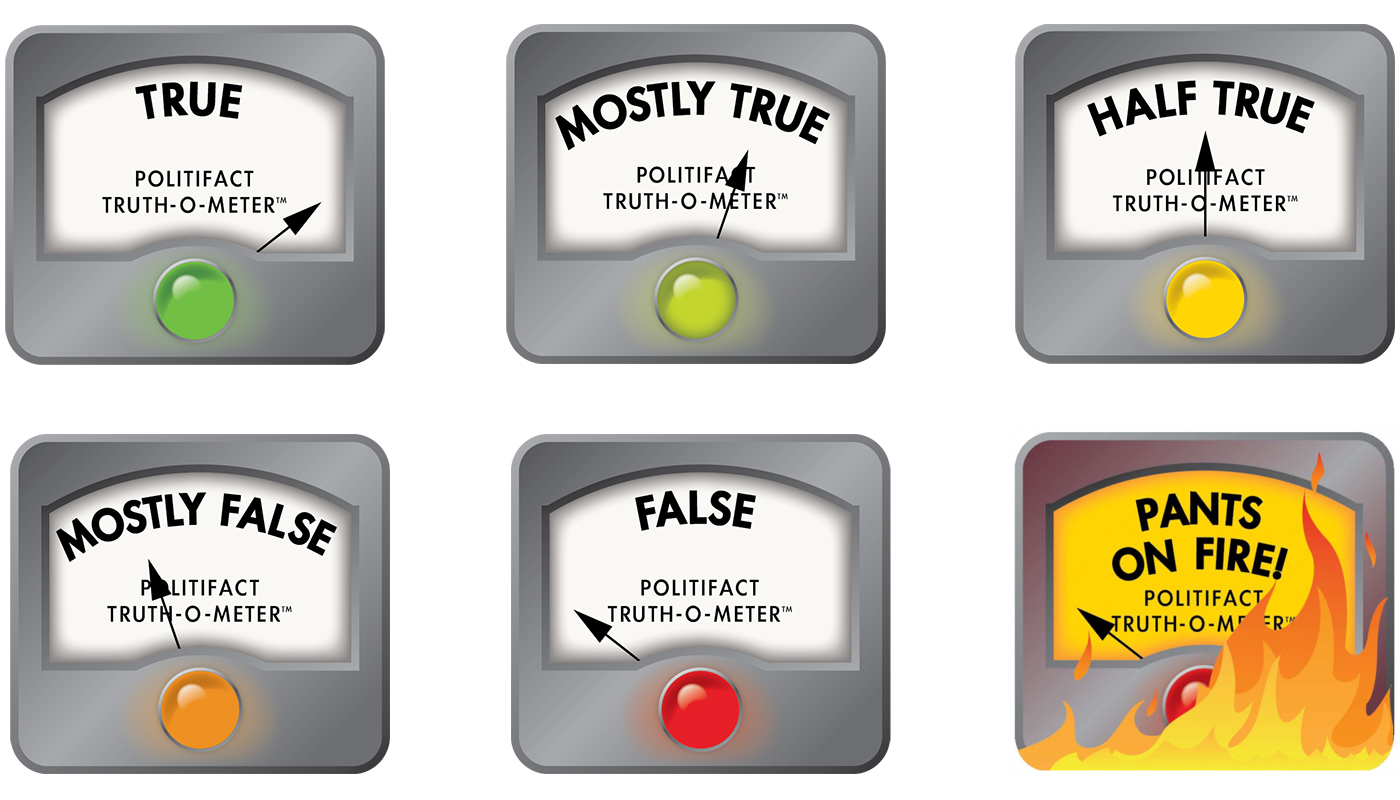Corrections hurt, and most professional journalists can probably name at least one they’ve had to make — sometimes a tiny detail in a large, time-intensive story. Luckily, there are editing and fact-checking practices you can put in place to bulletproof your stories, captions and graphics before publication.
Katie Sanders is the managing editor of PolitiFact, a nonprofit fact-checking website that rates the accuracy of politicians’ claims and other newsworthy statements. Accuracy checks are baked into PolitiFact’s reporting and editing process to ensure accurate evaluations of claims. (PolitiFact is owned by Poynter, which sponsors this newsletter.)
Sanders shared tips for making an accuracy checklist, balancing speed and accuracy, and tracing information back to primary sources. This interview has been lightly edited for length and clarity.
Tell me about your role in the daily editing process.
I work with about four other editors on managing first rounds of edits, when we give a story the most scrutiny. I continue to work with stories that come in through our secondary phase, when we decide the rating on fact-checks. During that phase we assign two more editors to read a piece and look for holes, grammatical errors, things like that. Then we decide the rating in that discussion and handle publication.
How do editors and reporters verify information before publishing a story at PolitiFact?
We really trust our reporters and require them to thoroughly vet their stories all along the way. If a story has been thinly reported, it’s going to show. Our brand of reporting is all about showing your work and proving your argument about whether a statement is accurate. It’s easy to see when corners are cut, and for our reporters, that’s not an issue because they’re so practiced in all the information they have to gather.
I do look at reporters’ source lists. I always feel better when I know they’ve talked to a variety of sources from different viewpoints and thoroughly teased an issue out. If I go through a piece a few times and see a hole in logic, I’ll talk to the reporter directly.
Fact-checking is a big part of PolitiFact’s overall mission. Why is it an important part of the editing process for any news outlet?
Corrections sting no matter how experienced you are. You can move on, but it’s hard to shake them off sometimes.
When your story’s in the editing phase, that’s the last line of defense for making sure the story is accurate and saying what we want it to say. It’s important for editors to not just move along the copy and give it a loose read. You need to challenge your reporters and make sure they have backing for assertions in their piece, because mistakes are costly for the credibility of yourself and your organization.
What do you wish you’d known about fact-checking earlier in your career?
As a reporter, I got very nervous before stories were published because I was certain I had messed up something. You’re on deadline and working as quickly as possible; it’s a situation that’s ripe for paranoia. A little paranoia is a good thing, but if I was talking to myself as a student journalist (Sanders was a reporter and editor at the Independent Florida Alligator at the University of Florida), I’d want them to know that the fact-checking process can help you sleep better at night if you execute it faithfully.
From PolitiFact, I’ve taken the importance of being able to trace back the small and big claims in your story with either an expert or a reliable link or article. Be careful to not go beyond what that source said to stretch it into something that is untrue. I see people make that mistake a lot: They learn one fact about something and then they get on the air, get carried away and exaggerate.
Don’t settle for the first source you find and make sure you’re going for the original source. Read the study itself, not just the article about the study. This is something young journalists might not always know to do, and it takes time. You don’t always get the full story from someone else’s version, and it’s helpful to review the primary evidence for yourself.
What’s the best way for students to balance speed with verifying sources in a breaking news situation?
If you’re not confident about a fact and it’s not a huge detail for the story, it might not be worth including if you’re not sure. You need to be sure. If it’s worth including, it’s worth verifying.
A lot of times our reporters talk to more experts than they need to for peace of mind that they’re getting the story right. Sources aren’t just people you can quote. They’re the experts, and as a reporter you have to accept that you don’t start out as the expert a lot of the time. Don’t be afraid to call them to double-check one last time even if it feels annoying.
What are the most avoidable mistakes or corrections you see, and how can students put in practices to avoid these?
Name spellings, titles, party identification for lesser-known folks, the state where someone is from. Those are all easy things to verify and should be on your checklist. Numbers are really important. Always check if it’s millions or billions. These numbers can seem so large it’s easy to confuse them, but that’s a sure place people will mess up at least once in their life.
Our reporters always send the fact checks to the experts who helped them. It’s a nice way of closing the loop and saying thank you, but also gives sources the chance to point out any errors. If something’s wrong in your story, it’s much better to catch it immediately than later.
What other advice do you have for student journalists?
Make sure you have a checklist for each story, even at a basic level. I wish that had been stressed in my own collegiate experience. Make sure the links in your story work and go to reputable places. And whether you make your own source list or not, it’s important to keep track of how you got the information for your story along the way. If you’re challenged on a line in your story, it’s good to be armed with a source to come back to.
It’s also important for editors to be respectful of reporters who are putting so much hard work into their stories. Don’t be jerks through the editing process. But don’t be so enamored by the reporting and writing that you aren’t raising questions about the support for what’s being said in the story.
An accuracy checklist to get you started
NPR Training’s accuracy checklist will help bulletproof your reporting, check basic facts and protect against silly typos. It provides a list of 14 things to check for every single story, even when you’re sure you know the university president’s name. Check the spelling anyway out of discipline. There’s even a 3×5 version to print out and keep in a reporter’s notebook.
One story worth reading
Your journalism career doesn’t have to be a linear progression or a straightforward ladder. Instead, think of it as a river delta, Bridget Thoreson writes for Zapier — “a fertile area to explore that flows toward an ultimate objective.” Using this metaphor emphasizes that there will be curves, shifts and obstacles along the way, and that’s okay. Thoreson reminds students and early-career journalists to embrace variety, explore different paths and find strength in collaborations.
Opportunities and trainings
- Poynter’s internship database lists paid newsroom internships at publications around the country.
- Register for the fall National College Media Convention, to be held virtually Oct. 14-16.
- Register for the FIRE Regional Conference on student online speech, to be held Oct. 16 in Nashville.
- High school students, enter The New York Times’s “Coming of Age” multimedia contest by Oct. 27.
- College students, enter the Reynolds Journalism Institute’s Student Innovation Competition by Oct. 31.
- High school students and advisers, register for the fall National High School Journalism Convention, to be held virtually Nov. 1 to Jan. 15.
- College juniors and seniors, apply for scholarships from ACES by Nov. 15.









